The Patterdale Terrier is a mid-sized canine that’s bred from the Northern Terriers of the 18th century. This dog is known for its energy, prey drive, work ethic, and braveness.
How much does a dog like the Patterdale Terrier shed? The Patterdale Terrier can be low-shedding to high-shedding depending on whether the dog has a rough coat, broken coat, or smooth coat. That makes grooming the Patterdale Terrier a mixed bag as well.
In this guide, I’ll take you through all three coat types the Patterdale Terrier may have so you can gauge how much this unique dog may shed. I’ll also discuss grooming requirements and whether the Patterdale Terrier is hypoallergenic, so make sure you keep reading!
Recommended: Go here to see our top-rated dog hair blow dryers
Patterdale Terrier Shedding
The Patterdale Terrier is a unique breed in that it may have one of three coat types. Depending on which coat your own dog possesses, its rate of shedding can be quite low to very high.
Let’s go over the different coat types now.
The first is a rough coat. Patterdale Terriers with a rough coat will have longer fur that belies most of the photos you might have seen of this breed when researching online. The following photo isn’t the perfect example of a rough-coated Patterdale Terrier, but it’s close.
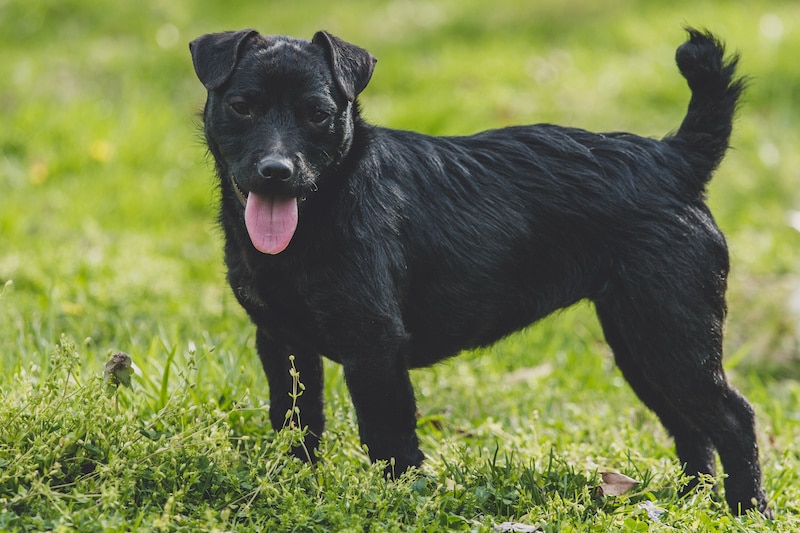
The hair will grow long not only on the body but on the muzzle, ears, and face as well. The fur is also incredibly thick and double-layered.
This means a rough-coated Patterdale Terrier can shed seasonally. The first time this will happen each year is in the summer, then again in the winter.
The shedding periods last for weeks at a time and require more cleanup than usual. And I would rate this rate of shedding as a 4/5 or even a 5/5.
The next type of coat a Patterdale Terrier might have is a broken coat.
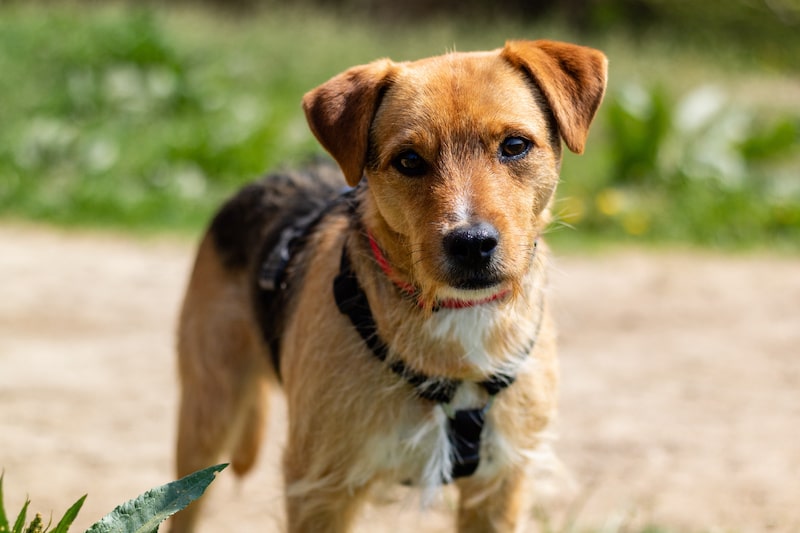
As the name alludes, a broken coat on a Patterdale Terrier has a rougher, coarser feel. The length of the fur is sometimes as long as a rough-coated Patterdale but sometimes shorter as well.
Although the length of the coat suggests that a broken-coated Patterdale Terrier won’t shed much, this dog is double-coated too. After all, Patterdale Terriers are supposed to have weather-resistant coarse coats.
The texture of the coat and the length will control the excessiveness of the shedding, but you still have to anticipate those seasonal shedding spikes twice per year.
I would rank a Patterdale Terrier with a rough coat as a 2/5 or 3/5 in the shedding department.
The third and final type of coat your Patterdale Terrier may display is a smooth coat.
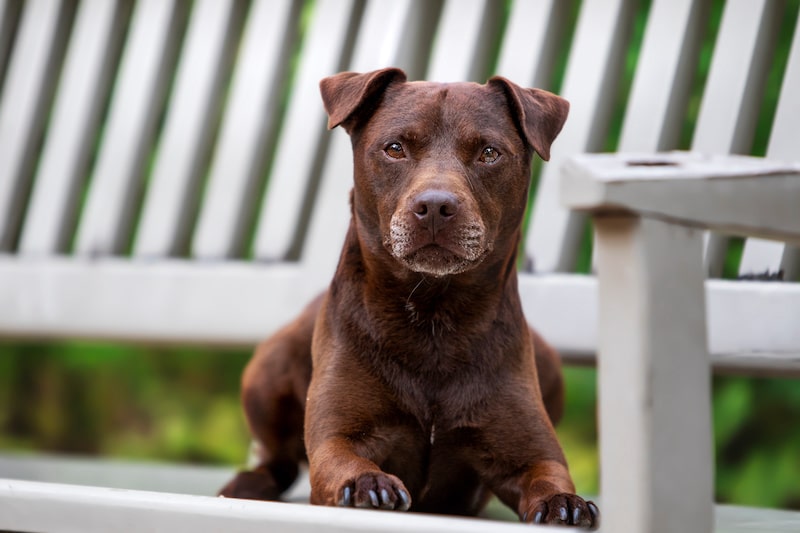
The smooth-coated Patterdale features a glossy, shorter coat throughout. The dog is typically double-coated.
Shorter-furred dogs tend to shed more than dogs with longer hair due to the differences in the speed of the dog hair growth cycle, although given the hair is shorter, it’s often less noticable.
All dogs grow hair across four cycles: anagen (the growing stage), catagen (the stoppage phase), telogen (the resting stage), and exogen (the shedding stage).
A dog with a shorter coat, such as the smooth-coated Patterdale Terrier, goes through these four stages faster than a longer-coated Patterdale, as its hair has to grow longer.
Thus, the smooth-coated Patterdale Terrier will shed quite a bit, I’d say a 3/5 or a 4/5.
Grooming Your Patterdale Terrier
Just as the Patterdale Terrier’s rate of shedding varies, what kind of grooming experience you’ll get when caring for this dog varies as well.
Let’s begin with the smooth-coated Patterdale. When it comes to grooming this dog, it couldn’t be any easier.
You need a good grooming and de-shedding brush for starters. A wire brush can comb through your Patterdale’s smooth, short fur and pull out all the loose, dead hair before it can be shed from your dog.
Plan to brush your pup close to every single day, especially when shedding seasonally. During other times of the year, regular brushing several times per week is still highly recommended.
If yours is a broken-coated Patterdale, then a slicker brush suits this dog’s everyday grooming requirements.
And indeed, grooming will be every single day when your dog sheds seasonally and then no more than every few days any other time of the year.
A slicker brush also comes in handy for tending to a rough-coated Patterdale Terrier, as you’ll recall, these dogs are long-haired. The same brushing schedule as above applies.
Brushing your Patterdale Terrier does more than remove the loose fur before it can float all over your house.
Grooming also spreads skin oils that reduce itchiness and will lend your dog’s coat a pretty shine.
Moving on to bathing, you can wait longer to tend to the Patterdale Terrier in this area. This dog typically needs a bath about every three months.
Some dog owners even go as long as six months, but that’s up to you and how much stinky dog smell you can personally tolerate.
You can wash the Patterdale Terrier in a bathtub or outside in a kiddie pool. Use lukewarm water and dog-friendly shampoo (and conditioner if you wish).
While a smooth-coated Patterdale can hop right out of the tub and be towel-dried, you can tangle a longer-coated Patterdale’s coat that way.
I would recommend using a dog hair blow dryer for at least a few minutes, then allowing your Patterdale Terrier to air-dry the rest of the way.
You shouldn’t have to worry much about trimming your Patterdale Terrier, even the longer-coated varieties. It’s not a bad idea to manage the hair between their toes, so it doesn’t become a tripping hazard, but that’s about all you have to worry about.
Check out this grooming video for some more handy pointers:
Are Patterdale Terriers Hypoallergenic?
One of the reasons you might have become interested in the Patterdale Terrier is that you heard this dog is hypoallergenic. So it true?
Before I answer that question, allow me to define what a hypoallergenic canine is, as there are a lot of misconceptions among pet owners.
A hypoallergenic dog is typically more compatible with an allergy sufferer than a non-hypoallergenic dog, but they do not eliminate allergy symptoms altogether.
The reason that a hypoallergenic dog does not lead to the complete absence of symptoms is that a pet allergy has little to do with fur. An allergy sufferer is generally most sensitive to a dog’s dead skin (dander). And that dead skin can hitch a ride on the shed fur, so the heavier-shedding a dog is, the less hypoallergenic.
That doesn’t bode well for the Patterdale Terrier, which can be quite high-shedding.
A hypoallergenic dog is also usually quite small. Patterdales are 10 to 15 inches tall, so they’re not huge dogs by any means. They’re not tiny canines either.
It’s for those reasons that I would say no, the Patterdale Terrier is not hypoallergenic.
Recommended: Go here to see our top-rated dog hair blow dryers
How Can You Reduce Shedding?
The best way to reduce Patterdale Terrier shedding is through proper diet and grooming. These two things can make a huge difference to how much your dog sheds to begin with and how much of their hair ends up falling off their coat and onto your floors and furniture.
On the first point, diet, your vet should be able to recommend a good kibble, so that’s the best approach to knowing what to feed your dog. But there are some dog foods and supplements that are designed to improve your dog’s coat and limit excessive shedding.
As for grooming, the most important task is brushing, which I discussed in the previous section, but committing to a proper bathing, blow drying, and brushing session once a month or so can make a world of difference when it comes to reducing shedding.
Bathing your dog with a proper de-shedding shampoo will remove a lot of the old fur, blow-drying with a specially designed dog hair blower (on low heat) can blast off a surprising amount of fur after bathing, and brushing is the final step that can bring it all home.
Also, if you’re concerned about dander, there are some great dander removal products on the market that can help you get this under control.
For more ideas, check out this post:
Is a Patterdale Terrier Right for You?
Are you still mulling over the decision of whether or not to adopt a Patterdale Terrier? If so, read on, as this section will help you out.
The Patterdale Terrier comes from the Northern Terrier dogs from the start of the 18th century, specifically, the Northumberland Pit Terrier and the Old English Terrier.
The OG Patterdales weren’t that well-loved, but after the breeding standards were refined, Patterdales became more popular. They were used all throughout northern England for hunting, including foxes, nutria, raccoons, and groundhogs.
Since the Patterdale is considered a type of dog rather than a breed, it’s not recognized by the American Kennel Club.
However, the Patterdale Terrier is registered in both the American Dog Breeders Association and the United Kennel Club.
The Patterdale is sweet, affectionate, charming, semi-adaptable, very friendly, and wicked smart. However, the dog can be very stubborn, which is something to keep in mind.
Is the Patterdale Terrier a suitable companion for apartment dwellers? Well, the Patterdale isn’t too large, so it shouldn’t feel cramped in an apartment.
The dog is very energetic, though, and must be given a place outdoors to expend its energy, such as a dog park.
Patterdales can be trained and socialized to harmonize with other dogs in your household. However, the same does not apply to other pets.
Cats, hamsters, gerbils, birds, and any other household pet that is smaller than the Patterdale will not be a good match for this dog. You’ll recall that the Patterdale Terrier has an exceptionally high prey drive.
Even with socialization, your Patterdale might always perceive these animals as prey.
Patterdales are high-energy canines, and they can be a little too strong for their own good at times. Very young children thus might not be the best match for this dog, but older kids who can handle a rambunctious pup would be.
If you were hoping for a quiet dog, that might not be the Patterdale. This canine whines, yaps, and barks quite fervently. You’ll have to train yours to be quiet.
Recommended: Go here to see our top-rated dog hair blow dryers
Bottom Line
The Patterdale Terrier is a mid-sized hunting dog that has one of three unique coat types. Since most Patterdales are double-coated, they shed quite a lot, but the wiry-coated Patterdales might be slightly lower-shedding.
Patterdales may be stubborn and a touch difficult to groom, but the dog has a sweet disposition, gets along well with most children and dogs, and is quite smart. Therefore, the Patterdale Terrier could be just the dog you’re looking for!
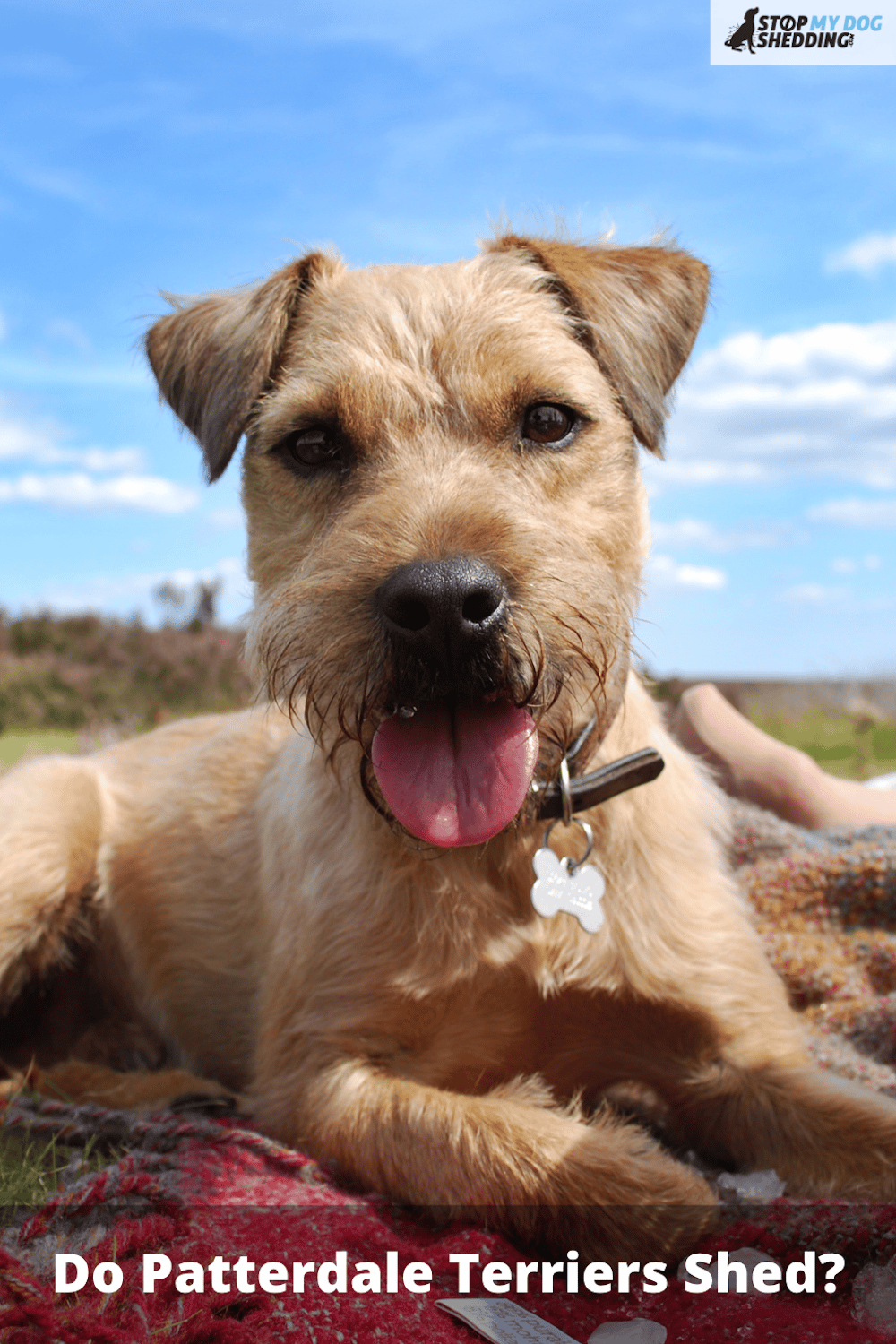

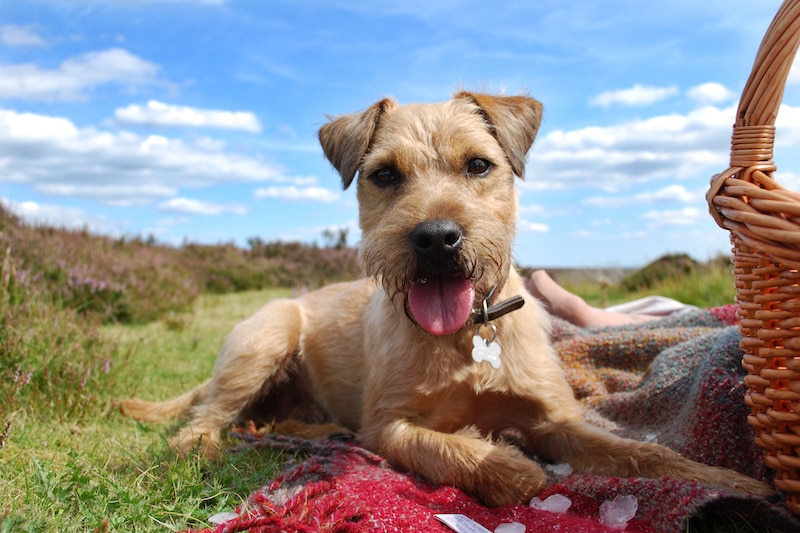










Please note: By submitting a comment using the above comment form, you confirm that you agree with the storage and handling of your data by this site as detailed in our Privacy Policy.